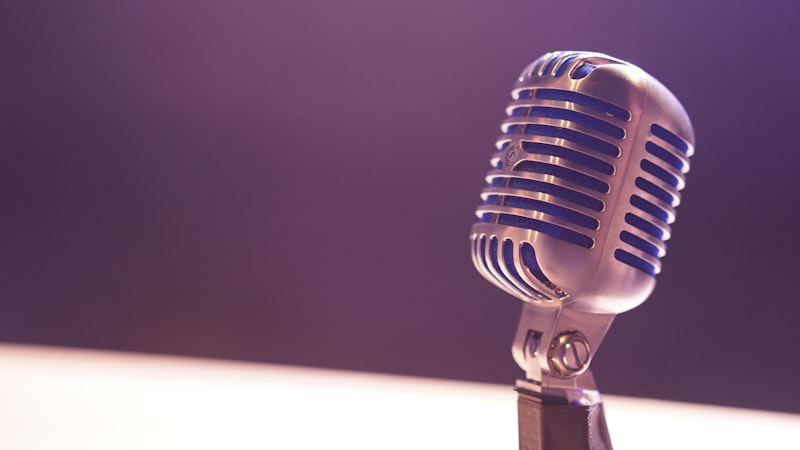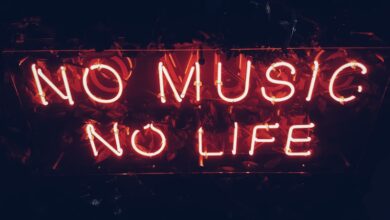Improving Your Music Sight-Reading Skills

Are you tired of struggling to sight-read music? Do you find yourself fumbling through sheet music, unsure of what notes to play? Improving your music sight-reading skills can seem like a daunting task, but fear not! In this article, we will explore effective strategies to help you become a proficient sight-reader.
First and foremost, practice is key. Like any skill, sight-reading requires consistent effort and dedication. Set aside regular practice sessions where you focus solely on sight-reading exercises. Start with simple pieces and gradually work your way up to more complex compositions. Remember, slow and steady wins the race!
When you come across a challenging passage, break it down into smaller chunks. Analyze the rhythm, identify any difficult intervals, and practice those sections separately. By deconstructing the music, you can tackle each element individually and then put them together seamlessly.

Another helpful tip is to familiarize yourself with common musical patterns and phrases. Recognizing these patterns will enable you to anticipate what comes next, making sight-reading easier and faster. It’s like learning a language – once you understand the grammar and vocabulary, reading becomes effortless.
Don’t forget to use your ears as well as your eyes. Listening to recordings of the music you are sight-reading can provide valuable insights into phrasing, dynamics, and overall musicality. This auditory input will enhance your interpretation and help you make sense of the written notation.
Furthermore, consider joining a music ensemble or participating in sight-reading workshops. Collaborating with other musicians and sight-reading together can be a fun and rewarding experience. It exposes you to different musical styles and challenges you to adapt quickly to unfamiliar music.
Lastly, don’t be too hard on yourself. Sight-reading is a skill that takes time to develop. Embrace the process and enjoy the journey. With persistence and patience, you will witness significant improvements in your music sight-reading abilities.
Improving your music sight-reading skills requires regular practice, breaking down challenging passages, recognizing patterns, listening to recordings, seeking opportunities for collaboration, and maintaining a positive mindset. By implementing these strategies, you will become a confident and proficient sight-reader. So, grab your sheet music, sit at the piano, and embark on your sight-reading adventure today!
Unlock the Secrets of Music Sight-Reading: Expert Tips and Techniques Revealed
Are you a budding musician eager to take your skills to the next level? Have you ever wondered how those accomplished musicians can effortlessly read sheet music and play it flawlessly on their instruments? The answer lies in the fascinating world of music sight-reading. In this article, we will uncover the secrets of music sight-reading, providing you with expert tips and techniques that will revolutionize your musical journey.
Music sight-reading is the ability to look at a sheet of music and play it accurately on your instrument in real-time. It’s like deciphering a musical language, allowing you to perform pieces you’ve never encountered before. Think of it as reading a captivating story for the first time, where each note and symbol holds its own meaning, contributing to the overall narrative of the piece.

So, how can you unlock this coveted skill? First and foremost, familiarize yourself with the fundamentals of music theory. Understanding key signatures, scales, and intervals will provide you with a solid foundation for sight-reading. Just like knowing grammar helps you comprehend a written text more easily, grasping music theory allows you to interpret the language of music effortlessly.
Next, start small and gradually increase the complexity of the music you practice. Begin with simple melodies and gradually add more challenging pieces to your repertoire. This progressive approach will build your confidence and strengthen your sight-reading abilities over time.
One crucial technique to master is scanning ahead while playing. Train your eyes to look at upcoming measures while your fingers navigate the current ones. This way, you can anticipate what’s coming next, allowing for smoother transitions and reducing the chance of mistakes.

Another valuable tip is to recognize patterns within the music. Just like identifying recurring motifs in a story, recognizing musical patterns can help you anticipate notes, rhythms, and chord progressions. This intuitive understanding will enable you to read music more fluently.
Lastly, practice regularly. Consistency is key when it comes to sight-reading. Set aside dedicated time each day to work on your skills. As with any other discipline, the more you practice, the better you will become.
Music sight-reading is a skill that can elevate your musical abilities to new heights. By understanding music theory, gradually increasing difficulty, scanning ahead, recognizing patterns, and practicing consistently, you’ll unlock the secrets of music sight-reading. So, grab your instrument, immerse yourself in the language of music, and embark on an exciting journey of discovery. The world of sheet music awaits you!
From Novice to Virtuoso: Mastering Music Sight-Reading Made Easy

Are you an aspiring musician looking to enhance your musical skills and take your performances to the next level? Look no further! In this article, we will guide you on a journey from being a novice to becoming a virtuoso in music sight-reading. Whether you’re a pianist, guitarist, or any instrumentalist, mastering the art of sight-reading can significantly improve your overall musicianship.

But first, what is music sight-reading? It’s the ability to play or sing a piece of music accurately at first sight, without prior practice. It’s like deciphering a musical language on the spot. While it may seem daunting, with the right approach and dedication, anyone can conquer this skill.
The key to success in sight-reading lies in building a strong foundation. Start by familiarizing yourself with music theory essentials such as note names, rhythms, key signatures, and time signatures. Understanding these fundamentals will enable you to decode musical notation effortlessly.
Next, develop your eye-hand coordination by practicing regularly. Begin with simple exercises and gradually progress to more complex pieces. Treat each sight-reading session as a challenge and focus on accuracy rather than speed. Remember, slow and steady wins the race!
To further enhance your sight-reading abilities, incorporate rhythm exercises into your practice routine. Rhythm is the backbone of music, and being able to interpret rhythmic patterns accurately will greatly improve your sight-reading proficiency. Practice clapping or tapping rhythms, counting beats aloud, and utilizing a metronome to develop a strong sense of timing.
Additionally, don’t forget about dynamics and expression. While sight-reading, aim to capture the musical nuances and bring life to the piece. Pay attention to markings such as crescendos, decrescendos, staccatos, and legatos. By incorporating these elements, you can transform a mere sequence of notes into a captivating musical performance.
Mastering music sight-reading is an essential skill for any musician looking to excel. By building a solid foundation in music theory, practicing regularly with varied exercises, and paying attention to dynamics, you can progress from being a novice to becoming a virtuoso. So, grab your instrument, immerse yourself in the magical world of sight-reading, and watch your musical abilities soar to new heights!
Boost Your Musical Fluency: 10 Strategies to Enhance Sight-Reading Skills
Are you ready to take your musical fluency to the next level? Whether you’re a beginner or an experienced musician, enhancing your sight-reading skills can significantly boost your overall musical prowess. So, let’s dive into 10 effective strategies that will help you improve your sight-reading abilities and become a more confident musician.
-
Start with Simple Pieces: Begin by practicing easy pieces that are well within your skill level. This allows you to focus on reading the sheet music accurately without getting overwhelmed.
-
Master Music Theory: Understanding key signatures, time signatures, scales, and intervals is crucial for sight-reading success. A solid foundation in music theory enables you to quickly identify patterns and make sense of the notes on the page.
-
Utilize Rhythm Exercises: Sight-reading isn’t just about playing the right notes; it also requires a strong sense of rhythm. Practice rhythmic exercises separately to sharpen your timing and internalize different rhythms.
-
Emphasize Accuracy over Speed: While it’s tempting to rush through a piece when sight-reading, prioritize accuracy instead. Aim to play each note correctly, even if you need to slow down initially.
-
Read Ahead: Train yourself to read ahead of your current position while playing. By scanning upcoming measures, you can anticipate chord changes, note patterns, and other musical elements, making the process smoother.
-
Practice Regularly: Consistency is key to improving any skill, and sight-reading is no exception. Dedicate regular practice sessions solely to sight-reading to build familiarity and confidence.
-
Explore Various Musical Genres: Expand your repertoire and challenge yourself by exploring different musical genres. Each genre has its unique characteristics, helping you develop a diverse set of sight-reading skills.
-
Join a Chamber Group or Ensemble: Playing with others enhances your sight-reading abilities as it requires you to adapt quickly to different musical cues and dynamics. Joining a chamber group or ensemble provides valuable real-time sight-reading practice.
-
Use a Metronome: The metronome is your best friend when it comes to sight-reading. It helps you maintain a steady tempo and improves your rhythmic accuracy.
-
Learn from the Masters: Study recordings of accomplished musicians sight-reading challenging pieces. Observe their techniques, phrasing choices, and overall musicality to gain insights and inspiration for your own practice.
By incorporating these strategies into your practice routine, you’ll gradually witness a remarkable improvement in your sight-reading skills. Remember, consistency, patience, and a positive mindset are essential for success. So, grab your instrument, embrace the challenge, and embark on a journey to boost your musical fluency through the art of sight-reading.
The Art of Quick Thinking: How to Develop Lightning-Fast Sight-Reading Abilities
Have you ever marveled at musicians who effortlessly read and perform sheet music with lightning-fast precision? It’s as if they possess a magical ability to decipher musical notes on the spot. Well, let me tell you a little secret – it’s not magic; it’s the art of quick thinking and the skill of developing lightning-fast sight-reading abilities.
Sight-reading, also known as prima vista, is the ability to read and interpret written music in real-time without prior rehearsal. It requires a combination of mental agility, pattern recognition, and deep understanding of musical theory. But fear not, for with practice and the right mindset, anyone can master this art.
To begin your journey towards becoming a proficient sight-reader, one must start with the basics. Familiarize yourself with the musical staff, note values, key signatures, and rhythmic patterns. These fundamental elements serve as the building blocks of sight-reading proficiency.
Next, embrace the power of consistent practice. Set aside dedicated time each day to work on sight-reading exercises. Start with simpler pieces and gradually progress to more complex compositions. Focus on accuracy and gradually increase your speed over time. Remember, it’s better to play slowly and accurately than to rush through and make mistakes.
Developing a keen sense of anticipation is another crucial aspect of quick thinking in sight-reading. Train yourself to look ahead while playing, constantly scanning the upcoming measures for potential challenges. By doing so, you’ll be able to mentally prepare yourself for tricky passages and execute them more fluidly.
Furthermore, immerse yourself in diverse musical genres and styles. This exposure will broaden your musical vocabulary and familiarize you with different rhythmic patterns and melodic structures. The more diverse your repertoire, the more adaptable and versatile you become as a sight-reader.
In addition to regular practice, seek opportunities to sight-read with others. Join a chamber ensemble, accompany vocalists, or participate in jam sessions. Collaborative sight-reading helps you develop the ability to synchronize with other musicians, sharpening your overall musicality.
Remember, quick thinking in sight-reading is not solely about speed but also encompasses accuracy, interpretation, and expression. Approach each piece with curiosity and an open mind. Let the music guide you, and allow your intuition to shape your performance.
The art of quick thinking in sight-reading is an attainable skill that can be cultivated through consistent practice, anticipation, exposure to diverse musical styles, and collaborative experiences. So, grab your sheet music, sit at the piano, or pick up your instrument of choice. Embrace the challenge, and let the magic of lightning-fast sight-reading unfold before your eyes.




